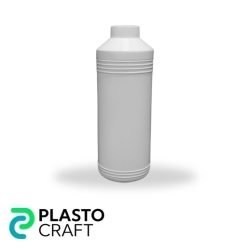
HDPE Injection Jar
| Specification | Detail |
|---|---|
| Capacity | 1000 Grams |
| Height | 7.5 Inches |
| Ground Diameter | 14 Inches |
Minimum Order Quantity 500
Packaging is a fundamental aspect of the contemporary world, serving a multitude of purposes, including safeguarding, preserving, and presenting products. The HDPE (High-Density Polyethylene) injection jar stands out as a groundbreaking packaging solution, having reshaped the industry with its precision and performance. This article delves into the features, advantages, applications, and environmental implications of HDPE injection jar, elucidating how they have become the favored choice for packaging a diverse range of products across various sectors.
Understanding HDPE Injection Jar
HDPE injection jars are containers meticulously molded from high-density polyethylene using an injection molding process. This method involves melting the HDPE resin and injecting it into a mold, resulting in a seamless, single-piece jar design. The technique provides intricate detailing, uniform thickness, and consistent quality, ensuring that every jar meets the highest standards.
The Advantages of HDPE Injection Jar
Precision and Consistency: HDPE injection jar are renowned for their outstanding precision and consistent quality. The injection molding process guarantees identical jars, minimizing variations in size, shape, and wall thickness. This precision is crucial for creating a reliable and uniform packaging solution.
Robustness and Durability: HDPE, with its remarkable strength-to-weight ratio, makes injection jars exceptionally robust and durable. These jars can withstand diverse handling conditions during transportation and storage without compromising the contents’ integrity.
Versatility in Design: The injection molding process permits intricate designs, customized shapes, and various sizes. Manufacturers can tailor the jars to meet the branding requirements and product specifications of different industries, enhancing their versatility.
Airtight Seal: HDPE injection jars come equipped with airtight seal caps, ensuring the contents remain fresh and uncontaminated. The secure seal is essential for products with shelf-life considerations, such as food items, pharmaceuticals, and personal care products.
Applications of HDPE Injection Jar
Food and Beverage Industry: HDPE injection jars are widely used in the food and beverage sector to package a range of products, including sauces, dressings, condiments, pickles, honey, and jams. The airtight seal and robust construction maintain the flavors and quality of the contents, meeting consumer expectations for freshness.
Pharmaceutical and Healthcare Products: Pharmaceutical companies rely on HDPE injection jars for the packaging of tablets, capsules, powders, and other medications. The precise design and airtight seal contribute to the safety and efficacy of the enclosed products.
Personal Care and Cosmetics: In the personal care and cosmetics industry, HDPE injection jars are used for creams, lotions, balms, and beauty products. The jars’ durability ensures safe storage and transport, while the airtight seal maintains the product’s integrity.
Industrial and Household Chemicals: HDPE injection jars are well-suited for packaging household and industrial chemicals, including cleaning agents, detergents, and solvents. The robust construction of the jars provides the necessary protection against leaks and spills.
Environmental Considerations
Recyclability: HDPE is one of the most recyclable plastics, contributing to a circular economy and reducing waste sent to landfills. Manufacturers and consumers can participate in recycling initiatives to ensure the proper disposal and recycling of HDPE injection jars.
Sustainable Sourcing: To further enhance the environmental impact of HDPE injection jars, companies can explore using recycled HDPE or bio-based alternatives. Adopting sustainable sourcing practices can reduce the reliance on fossil fuels and minimize the carbon footprint.
Extended Product Life: The durability of HDPE injection jars contributes to an extended product life, reducing the need for frequent replacements and minimizing overall packaging waste.
Challenges and Sustainable Solutions
Single-Use Plastics: While HDPE injection jars are recyclable, challenges related to single-use plastics persist. The industry can address this concern by promoting reusable alternatives or exploring biodegradable materials.
Consumer Awareness: Raising awareness among consumers about the importance of recycling and responsible plastic usage can encourage environmentally-conscious behaviors and support recycling efforts.
Circular Economy Initiatives: Collaboration between manufacturers, consumers, and recycling facilities is essential to establishing an efficient circular economy for HDPE injection jars.



